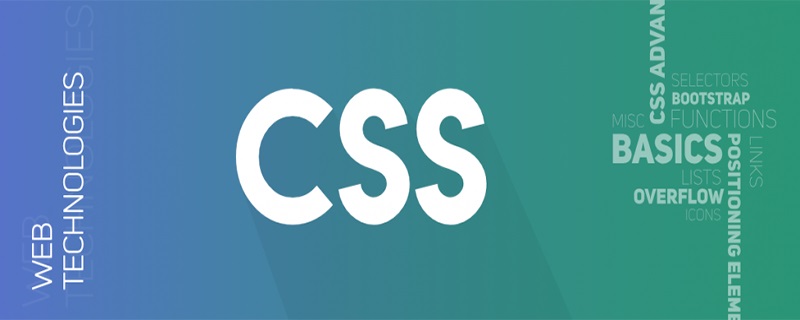Home >Web Front-end >CSS Tutorial >How to use CSS flexible box model flex in layout
How to use CSS flexible box model flex in layout
- WJforward
- 2020-05-30 10:42:182720browse

Application of CSS flexible box model flex in layout
Element centering
【1】Use main-axis alignment justify-content and cross-axis alignment align-items on the scalable container
<style>.parent{
display: flex;
justify-content: center;
align-items: center;}</style>
<div class="parent" style="background-color: lightgrey; height: 100px; width: 200px;">
<div class="in" style="background-color: lightblue;">DEMO</div> </div>【2】Use margin:auto
<style>.parent{
display: flex;}.in{
margin: auto;}</style>
<div class="parent" style="background-color: lightgrey;height: 100px;width: 200px;">
<div class="in" style="background-color: lightblue;">DEMO</div> </div>## on the scalable item #Align both ends
<style>.parent{
display: flex;
justify-content:space-between
}
</style>
<div class="parent" style="background-color: lightgrey;height: 100px;width: 200px;">
<div class="in" style="background-color: lightblue;">DEMO</div>
<div class="in" style="background-color: lightgreen;">DEMO</div>
<div class="in" style="background-color: lightcyan;">DEMO</div>
<div class="in" style="background-color: lightseagreen;">DEMO</div>
</div>
Align bottom
<style>.parent{
display: flex;
align-items: flex-end;
}
</style>
<div class="parent" style="background-color: lightgrey;height: 100px;width: 200px;">
<div class="in" style="background-color: lightblue; height:20px;">DEMO</div>
<div class="in" style="background-color: lightgreen; height:30px;">DEMO</div>
<div class="in" style="background-color: lightcyan; height:40px;">DEMO</div>
<div class="in" style="background-color: lightseagreen; height:50px;">DEMO</div>
</div>
Input box button
<style>.inputBox{
display: flex;
width: 250px;}.inputBox-ipt{
flex: 1;}
</style>
<div class="inputBox">
<input class="inputBox-ipt">
<button class="inputBox-btn">按钮</button>
</div>
etc. Sub-layout
<style>body,p{margin: 0;}.parent{
display: flex;}.child{
flex:1;
height: 100px;}.child + .child{
margin-left: 20px;}
</style>
<div class="parent" style="background-color: lightgrey;">
<div class="child" style="background-color: lightblue;">1</div>
<div class="child" style="background-color: lightgreen;">2</div>
<div class="child" style="background-color: lightsalmon;">3</div>
<div class="child" style="background-color: pink;">4</div>
</div>
Multi-column adaptive layout
<style>p{margin: 0;}.parent{display: flex;}.left,.center{margin-right: 20px;}.right{flex: 1;}</style>
<div class="parent" style="background-color: lightgrey;">
<div class="left" style="background-color: lightblue;">
<p>left</p>
<p>left</p>
</div>
<div class="center" style="background-color: pink;">
<p>center</p>
<p>center</p>
</div>
<div class="right" style="background-color: lightgreen;">
<p>right</p>
<p>right</p>
</div>
</div>
Hanging layout
<style>
.box{
display: flex;
background-color: lightgrey;
width: 300px;}.left{
margin-right: 20px;
background-color: lightblue;
height: 30px;}.main{
flex:1;}
</style>
<div class="box">
<div class="left">左侧悬挂</div>
<div class="main">主要内容主要内容主要内容主要内容主要内容主要内容主要内容主要内容主要内容主要内容主要内容主要内容主要内容</div>
</div>
Full screen layout
<style>body,p{margin: 0;}body,html,.parent{height: 100%;}.parent{
display: flex;
flex-direction: column;}.top,.bottom{
height: 50px;}.middle{
display: flex;
flex: 1;}.left{
width: 100px;
margin-right: 20px;}.right{
flex: 1;
overflow: auto;}.right-in{
height: 1000px;}</style>
<div class="parent" id="parent" style="background-color: lightgrey;">
<div class="top" style="background-color: lightblue;">
<p>top</p>
</div>
<div class="middle" style="background-color: pink;">
<div class="left" style="background-color: orange;">
<p>left</p>
</div>
<div class="right" style="background-color: lightsalmon;">
<div class="right-in">
<p>right</p>
</div>
</div>
</div>
<div class="bottom" style="background-color: lightgreen;">
<p>bottom</p>
</div>
</div>The above is the entire application of CSS flexible box model flex in layout. Related references:
##
The above is the detailed content of How to use CSS flexible box model flex in layout. For more information, please follow other related articles on the PHP Chinese website!
Statement:
This article is reproduced at:51dev.com. If there is any infringement, please contact admin@php.cn delete
Previous article:CSS sticky positioning sticky detailed explanationNext article:CSS sticky positioning sticky detailed explanation

